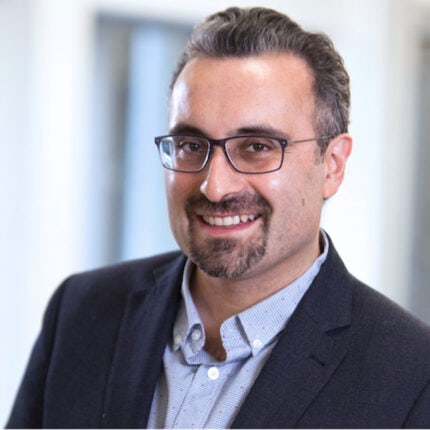The Office for Students’ revised approach to regulating equality of opportunity will require higher education providers to focus more on contextual considerations when developing access and participation plans (APPs). And there’s one area in particular that could benefit from this new focus – the ethnicity degree awarding gap.
This is the gap between students from Black, Asian and minority ethnic backgrounds who are less likely to graduate from their studies with a 2:1 or first class honours degree than their White peers. As previously outlined on Wonkhe, the gap is starkest for Black students, and progress on addressing it has so far been slow.
A new report commissioned by TASO and conducted by the University of Staffordshire shows that despite years of effort to tackle the ethnicity degree awarding gap across the higher education sector, there has been little innovation and limited evaluation of the impact of programmes to address it.
The purpose of this report was not to uncover “what works” but rather to map the landscape of existing practice. It analyses current approaches across the sector – as outlined in APPs – and provides a unique look at what providers are doing, how they are currently evaluating this work and how we at TASO can support the sector in doing so better.
Topography and typology of approaches
The landscape depicted in the report is fairly homogenous – it shows a handful of popular approaches. Most are being applied in a somewhat uniform fashion and not being tailored based on institutional needs. In coding 249 APPs by evaluation strategy, theory of change model, targets and approaches, the research revealed that developing curricula (typically inclusive curricula) and using learning analytics are the most popular approaches. In total, sixteen different types of approaches were identified across the sector.
While it’s understandable that providers adopt well-known ways of addressing the gap, there appears to be a pattern of “dragging and dropping” these approaches without reflecting on how they may be beneficial within a particular provider’s context. By considering how to deliver and adapt the different approaches in line with an organisation’s context, providers will be better placed to develop effective interventions. Theories of change and evaluation plans should be developed while planning interventions to maximise the likelihood of success.
APPs as a regulatory incentive – limits and possibilities
The report found widespread reference to the target of eradicating the ethnicity degree awarding gap by the end of the 2024–25 APP period, following regulatory guidance previously provided by the OfS. There appears to have been a somewhat mechanical reference to the OfS target, with limited variation in how it was discussed and very few APPs reflecting on the OfS’s reference to “unexplained” reasons for the gap.
There is a concern that the target, while accurately reflecting the ultimate aim of eliminating the ethnicity degree awarding gap, was somewhat disconnected from the actions and outcomes on the ground, and this could lead to inaction and discouragement even among those committed to tackling the gap.
Given the findings of our review, and national data showing the gap is not reducing, it is clear that the gap will not be eliminated by 2024-25. This raises a number of questions, for providers but also for the regulator in terms of how best to effectively address the gap in the short- to medium-term.
The OfS’s recent change to a risk-based approach that allows providers to set their own priorities may encourage more reflection on how best to deliver against the ethnicity degree awarding gap in different contexts. On the other hand, the fact that providers offered a somewhat rote response to the previous target suggests they may not currently know how best to address the gap, or possibly that it isn’t as high a priority as it should be.
In this context, there’s a challenge for the Office for Students in using its regulatory powers to incentivise behaviour change and improved outcomes. But there’s also a challenge for the sector and for TASO, to ensure that we implement and evaluate a wider range of programmes and learn what works and what doesn’t.
Sustained change – the three Cs and more
Along with coding the APPs, the Staffordshire University team conducted interviews with sector stakeholders and set up an expert reference group for the project. The interviews led to the development of key themes – particularly around categories for ensuring sustained change – which have been bundled up into the “three Cs” of curricula, culture and community.
Instead of aiming for a “silver bullet” organisational approach that will close the gap, the sector needs to recognise that sustained change relies on a cross-section of interrelated factors. Providers need to be clear about who has responsibility for undertaking the work, who will be accountable, who needs to be consulted and who needs to be informed.
In providers without a strong existing relationship or community with ethnic minority groups, the foundational step is to develop trust with students, recognising that trust is earned. Where staff and students feel that their contributions are tokenised or ignored, this may create mistrust and make subsequent student engagement more challenging. For effective progress to be made, students from representative ethnic and cultural backgrounds need to be involved not only in “rubber stamping” plans, but in developing and implementing approaches.
When implementing approaches, effective recruitment, leadership and support are required to ensure that the people who are responsible for undertaking the work have a genuine interest in it, the skills to make measurable progress, and the support and resources to do so. It takes time to consider how and why an approach will effect change and the factors that impact the efficacy of an approach.
Capacity issues
The research also highlighted the large differences in capacity and capability for evaluation across the sector. Some providers already feel confident in setting up short-term proxy measures to map out the path for achieving longer-term outcomes. But I recognise that many do not.
That’s why TASO is responding to the report’s findings with a new initiative to help bolster the sector’s evaluation capacity and confidence in developing theories of change. We will be collaborating with providers interested in receiving evaluation support to address the ethnicity degree awarding gap. Providers will receive support in the form of a TASO funded independent evaluator, to develop a theory of change for their intervention.
While I recognise there may be tough terrain ahead if we are to reach the aspirational goal of eliminating the ethnicity degree awarding gap, I do believe it is achievable. But it will require a sector-wide approach, in terms of leadership, regulatory incentives, adequate time and resources, and more evaluation support.
We owe it to the current and future students affected to ensure that we better address the longstanding and persistent ethnicity degree awarding gap, which impacts on ethnic minority and particularly Black student experiences in higher education, as well as having wider consequences for their future job and income prospects.














Thanks for this, Omar – a very timely reminder of the importance of understanding the experiences and needs of our students, and not making assumptions about those things based on high level demographic data. I think it’s crucial that as individual providers we don’t assume that ‘what works’ for the sector will necessarily work for our own student communities.
Great piece Omar. Thank you. Very pertinent observations. And as Tony says above, what works for the sector will not necessarily work for a university’s own community.
Arguably the point can be extended further. There will likely be a need for a more tailored approach even within one institution as there will be differences between schools/faculties, and then individual programmes.